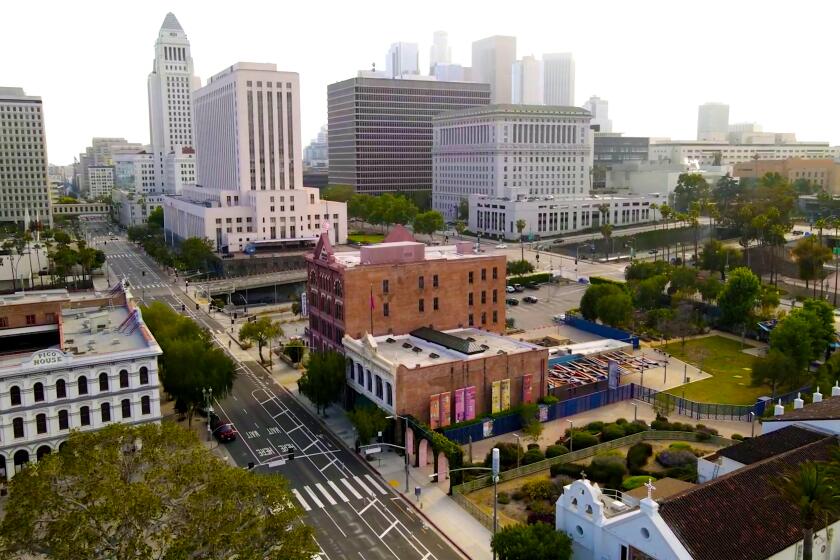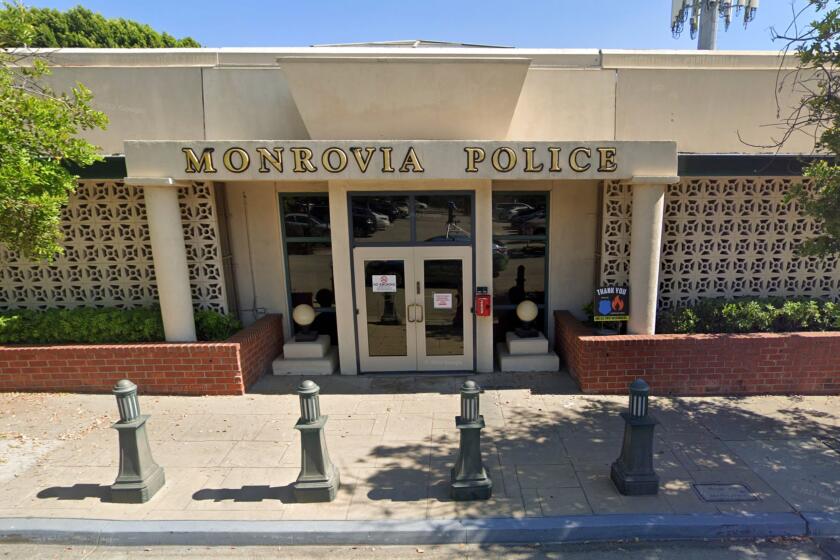Agencies Split on Sharing Crime Lab
Disagreements over how much the LAPD and the Los Angeles County Sheriff’s Department should share personnel, equipment and space in a planned state-of-the-art crime lab have delayed the process by seven months--and cost the county about $1.5 million, according to a city report.
Although the participating agencies are communicating better now, the recent report said each month that passed without progress represented about a $213,600 loss because inflation will run costs higher by the time the project is finished.
Sheriff Lee Baca, who led the lobbying campaign to get $96 million in state funding for the project, said there was no formal timeline. But law enforcement officials say they do have an obligation to get the lab constructed as quickly as possible--to make the most of the money and to eliminate a backlog of unsolved crimes.
The new facility will house both departments’ labs at Cal State Los Angeles. The planned 213,000-square-foot building, scheduled to open in 2005, will also serve as a training center for future criminalists.
A joint powers agreement, which spells out the responsibilities of the participating agencies, was scheduled to be approved last January, but was not passed by the Los Angeles City Council and the county Board of Supervisors until August. State construction funds could not be released until that agreement was finalized.
Officials say the process is moving forward. The county is currently in negotiations with an architectural firm and a construction manager, and plans to break ground by next year. But there are foreseeable roadblocks ahead: The key players still have to agree on terms of the lease, the facility’s layout, and use of staff and equipment.
The major dispute, since planning began, has been whether the two main law enforcement agencies in the county should consolidate their testing services. Though the county grand jury recommended that the agencies join forces to cut costs, LAPD Chief Bernard C. Parks did not want to combine his department’s crime scene testing with that of other agencies.
“There was never an intent that it would be merged to the point that you could not distinguish LAPD and sheriff’s,” Parks said. “I can’t go to the City Council and say, ‘Give me three more analysts because I’m working on a Whittier case.’ They’re paying our people to work on LAPD cases.”
When the parties first started discussing plans for a regional crime lab, Cal State Dean Jim Kelly said LAPD and sheriff’s officials sat on opposite sides of the table and refused to cooperate.
“Their conception was to build two towers with a bridge between them, and that’s where the university would be,” said Kelly, dean of the College of Health and Human Services. “I’m amazed at how far they’ve come.”
Nevertheless, Dist. Atty. Steve Cooley said he is worried about the project. “I’m very concerned that the people who are building the crime lab don’t blow $96 million,” he said. “We’re not going to get this type of opportunity again.”
Cooley was urged by the Sheriff’s Department to form an advisory board of stakeholders, including representatives from the city attorney’s office, the public defender’s office and women’s groups. The board, which began meeting in August, is expected to give recommendations on the building.
Though Baca and Parks still intend to keep the lab operations separate, they have agreed to discuss combining some lab resources.
Baca said he envisions both agencies sharing some technology and staff. “Space sharing is essential here,” Baca said.
Capt. Paul Enox, who heads the LAPD crime lab, said he is also aggressively looking for ways to best utilize and share space where it’s “practical and feasible.”
The city report, issued in June by then-Los Angeles City Controller Rick Tuttle, urged the two agencies to share testing equipment, evidence storage rooms, vehicle processing areas and a firing range.
“It is the duty of those who control millions of taxpayers’ dollars to take advantage of opportunities to save money or improve services--when it can be done without sacrificing core values or setting risky precedents,” Tuttle wrote.
The new facility is desperately needed in Los Angeles County, officials say. Both the LAPD and Sheriff’s Department’s current labs are cramped for space, short on staff and overwhelmed by a backlog of thousands of unsolved cases. Between the two agencies, there are at least 3,700 untested blood and semen samples from rape cases alone. Many of them date to 1994.
Because of the lack of resources, both law enforcement agencies rely on private companies to conduct some of their DNA testing.
“What this building will do is give us the ability to provide more quality resources . . . to help police investigate crimes and safeguard innocent people,” said Barry Fisher, who heads the sheriff’s lab.
Crime labs play a vital role in convicting criminals throughout Los Angeles County. Technicians and criminalists collect, identify and examine crime scene evidence and present results to the district attorney’s office for use in trials.
The criminalists use fingerprints, blood, fiber and urine samples to solve cases ranging from sexual assault to murder. With new advances in DNA testing, criminalists can even compare forensic evidence from unsolved cases with profiles of convicted felons.
The new lab will enable criminalists to make greater headway on sexual assault and murder cases and could result in more convictions, prosecutors and victim advocates say.
“Solving these cases would enable us to get more of these offenders off the street,” said Gail Abarbanel, director of rape treatment at Santa Monica-UCLA Medical Center.
Abarbanel said all victims have a right to have their forensic evidence examined rather than left in storage. “It doesn’t do any good sitting in a freezer,” she said. “If it’s in a crime lab and never opened, obviously the case isn’t going to be prosecuted.”
Law enforcement officials agree that the new facility will improve evidence collection, speed up testing, and make it easier to attract and retain criminalists.
Both the LAPD and the Sheriff’s Department need dozens more criminalists to keep up with the demand for forensic testing, said Deputy Dist. Atty. Lisa Kahn, who heads the district attorney’s new Forensics Sciences Division. “That’s how bad off we are,” Kahn said.
In its 1997 report, the county grand jury identified the shortcomings of the existing labs and concluded that a consolidated agency would save $3.3 million each year in personnel and equipment costs, and “operate more efficiently, effectively and economically” than two separate labs.
The following year, the California State Auditor reiterated the point that a regional laboratory would avoid the unnecessary cost of duplicating equipment and would improve the protection of evidence. The Board of Supervisors also moved in 1998 to join the labs.
“What we have today is a dysfunctional system,” Supervisor Mike Antonovich said in a recent interview. “We don’t need Siamese twins. We need one laboratory, just as we have one coroner and one district attorney.”
Everyone agreed that more money was needed for crime lab improvements. So law enforcement officials fought to get an initiative on last year’s ballot that would have provided $220 million in bond money to renovate and build labs throughout California. The initiative lost 54% to 46%.
Baca immediately turned to his backup plan and began lobbying the Legislature and Gov. Gray Davis to free up some of the budget surplus. Davis included the $96 million for the lab in last year’s budget.
Kahn said the project’s success is crucial to solving more crimes.
“The most important thing we could do in the criminal justice system,” she said, “is get this regional crime lab working.”
More to Read
Start your day right
Sign up for Essential California for news, features and recommendations from the L.A. Times and beyond in your inbox six days a week.
You may occasionally receive promotional content from the Los Angeles Times.






